MIGRAINE IN CHILDREN AND YOUNG PEOPLE
Migraine is a complex and disabling inherited condition that affects around four to ten percent of children.
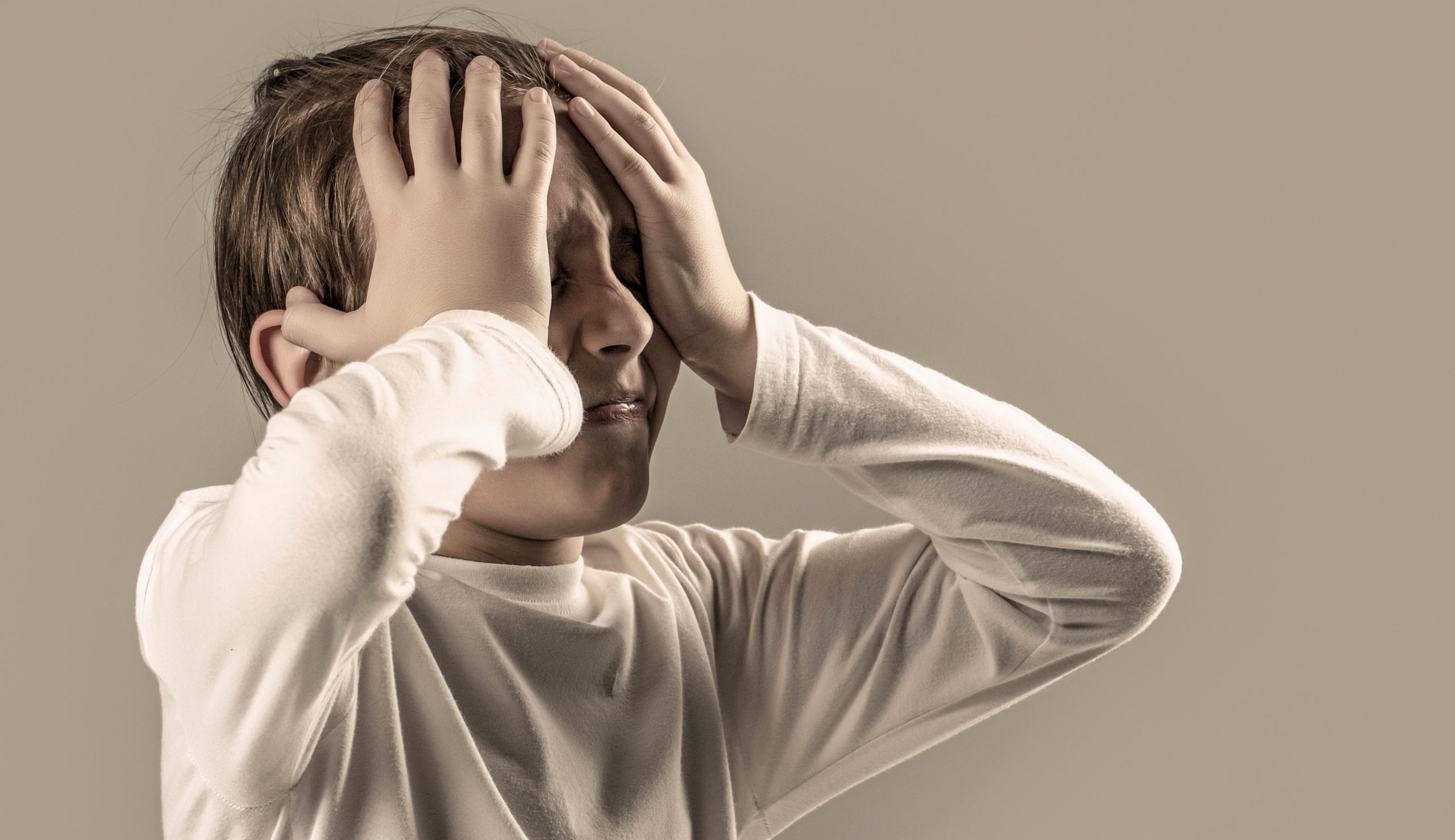
Perhaps because migraines in children can involve subtly different symptoms to adult migraine, half of those affected never receive a diagnosis. With migraines in children and young people, stomach pains are more frequent. Studies suggest that around 60 percent of children aged between seven and 15 experience headaches, but a diagnosis of migraine may be delayed because tummy pain, vomiting, travel sickness, limb pain and episodic dizziness can all confuse the picture. Children may experience migraine without headache, which is less common in adults. Migraine can have severe impacts on the life of a child, affecting their family relationships, school life and social activities. A late or missed diagnosis can result in poor management of their symptoms, anxiety about future attacks, poor school attendance, inappropriate or ineffective medication use, a loss of confidence and low self-esteem. Severe pain and vomiting that aren’t treated effectively can mean that children often have to remain at home during attacks and are unable to participate in normal daily activities. The pattern of migraines in teenagers starts to change. Migraine affects boys and girls equally until puberty, after which migraine is more common in girls.
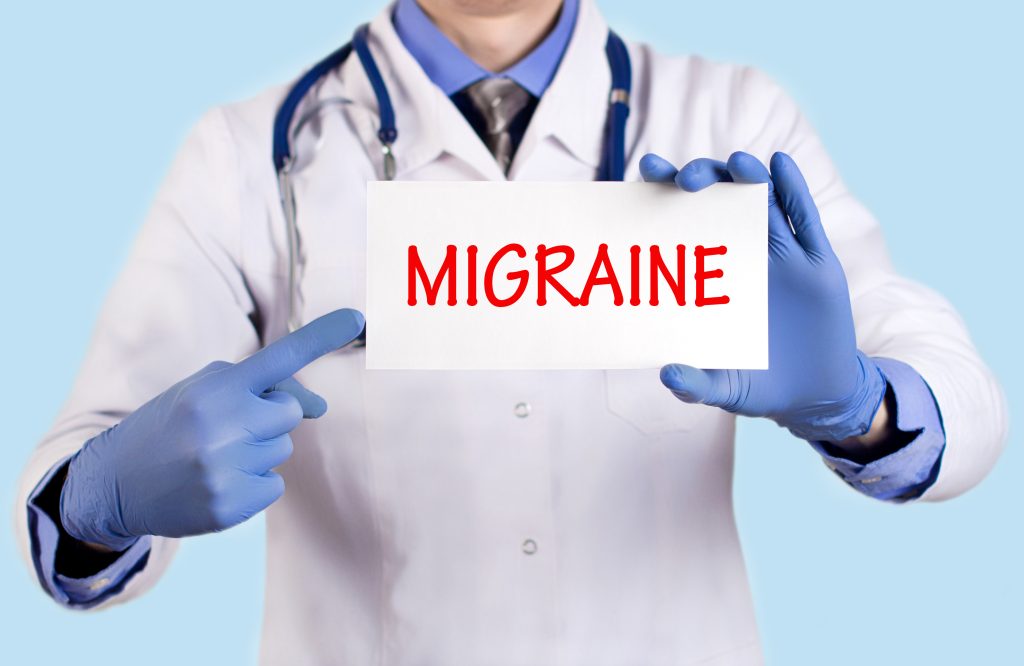
Diagnosing migraine in children:
Doctors don’t know what causes psoriatic arthritis. But factors such as immunity, genes, and the environment may play a role.
Migraine in children can differ from migraine in adults in several keyways:
- Headache typically affects the forehead and temple areas, or the whole head, rather than just one side.
- Abdominal pain and/or vomiting are common and may recur even without headache.
- Headache may be only a minor symptom or may not feature at all.
- Attacks are often shorter, sometimes lasting less than an hour.
Girls who get aura should not use contraceptive pills containing estrogen because of the increased risk of stroke with this medication.
When should I take my child to the doctor?
It may be clear to you, particularly if you have migraine yourself, that your child’s symptoms are typical of migraine. If attacks have obvious causes, symptoms respond to painkillers, and your child is otherwise fit and well, it may not always be necessary to seek a doctor’s advice. A pharmacist may be able to help choose the best acute rescue treatments.
It is very important to see a doctor for suspected childhood migraine in these circumstances:
- Headaches start before the age of seven.
- The headache changes.
- An unaccountable increase in frequency, severity, or duration of attacks
- Recent problems at school.
- Personality or behavioral changes
- Fits or blackouts
- Balance or co-ordination problems
- Failure to grow or attain normal developmental goals
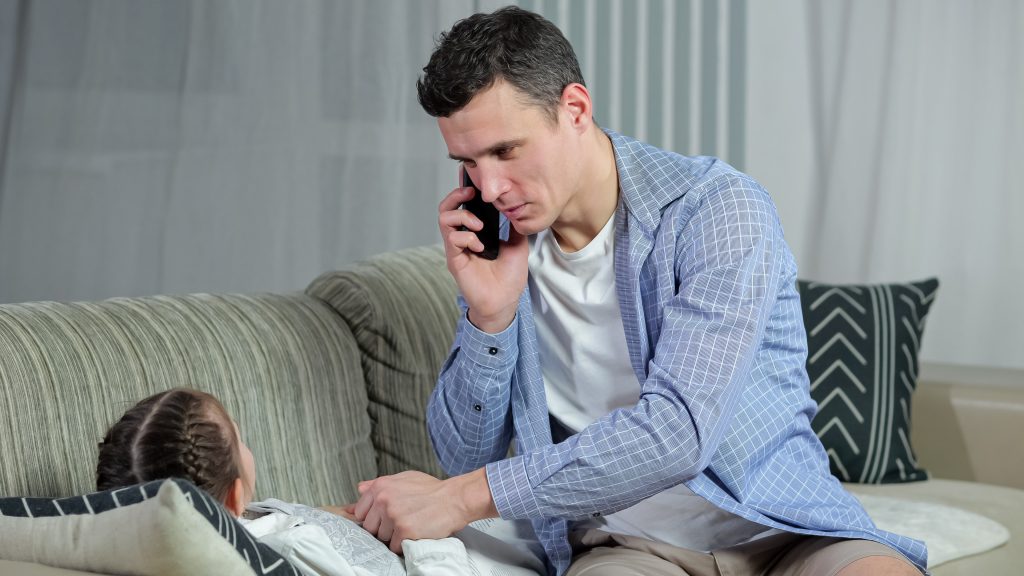
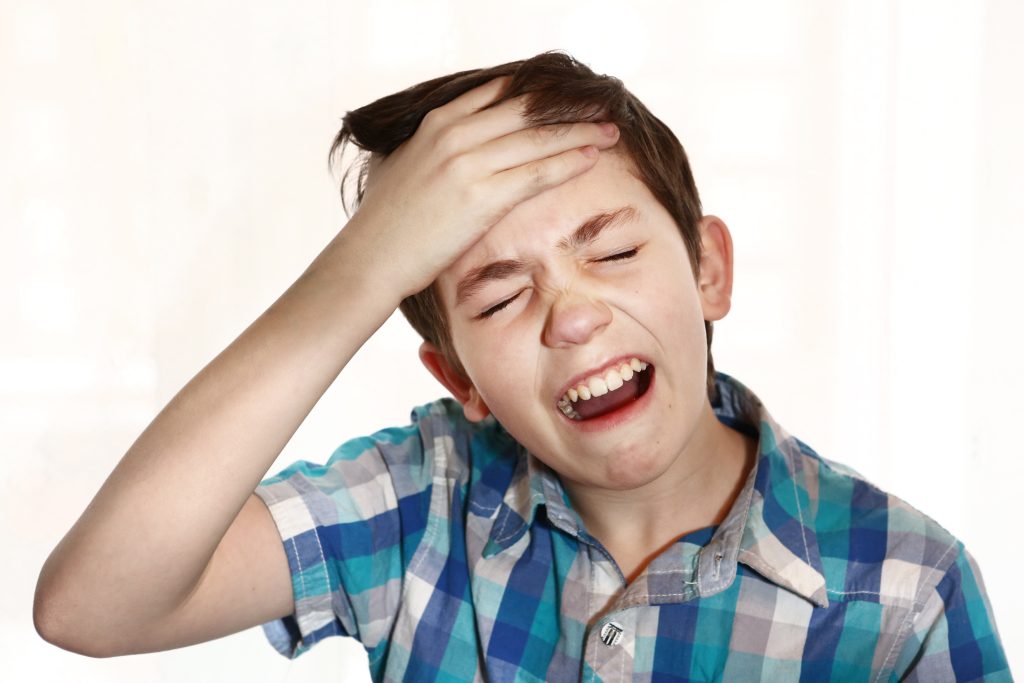
When do I need to see a doctor urgently?
Increasingly frequent, severe headaches, particularly if associated with seizures, persistent vomiting, fever, and blacking out, are all symptoms requiring immediate emergency medical attention.
Triggers for migraine in children
The brain of a migraine sufferer is sensitive to changes in routine. It’s essential, then, to avoid those changes that can trigger attacks.
Irregular eating times, in particular skipping meals or having long periods between meals or overnight, can be a major trigger in this age group, especially during the adolescent growth spurt. Encourage children to eat small, regular snacks of slow-release energy foods and to keep hydrated throughout the day.
Sport and exercise can trigger attacks, probably due to dehydration and their effects on blood sugar. Drinking lots of water and having a snack can help, as can sucking glucose tablets before and during sport, in addition to supplementing meals with mid-morning and mid-afternoon snacks.
Migraines in girls may coincide with puberty and the start of menstruation. Sometimes a monthly pattern can be seen due to hormone fluctuations.
Flickering fluorescent lighting, colds and viruses, working on a computer screen for too long, the stress of exams and schoolwork or poor sleep routines can all contribute to triggering migraine.
Allowing time for rest and relaxation is important in children, who will benefit from a fixed bedtime to ensure sufficient sleep. Avoid screen use for at least an hour before bedtime as the blue light can interfere with sleep quality.
Although a lie-in at the weekend is tempting, this can lead to a migraine attack occurring over the following 24 hours.
Sweet cravings can also be common in the early stages of migraine – so sweets, and chocolate in particular, are often wrongly blamed for triggering migraine.
A few susceptible children have an established link between certain foods and the onset of migraine, but keeping a food diary usually identifies such foods.
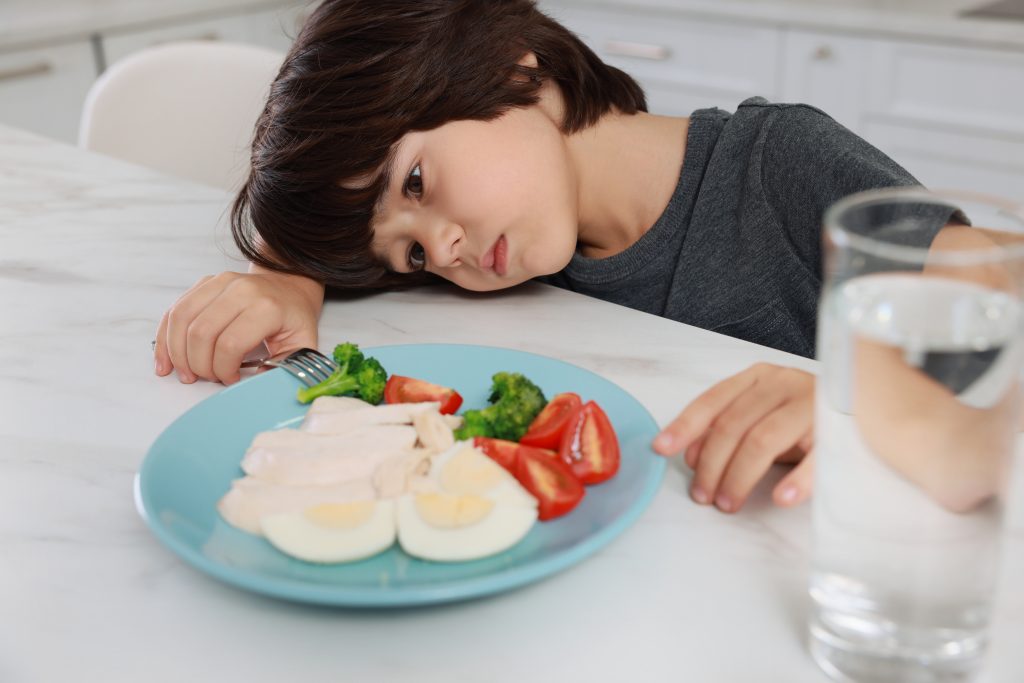
People often wonder about food triggers. For most children, it isn’t necessary to restrict foods. Instead, focus on making sure that children have a sensible and regular diet.
Keep a simple migraine diary
Just as in adults, migraine is triggered by a combination of events, rather than one single factor. Encourage your child, if they’re old enough, to keep a daily migraine diary recording any event that is different from the normal routine or which may be relevant.
A migraine diary can help keep track of missed meals, sports activities, stressful lessons, late night study, emotional upsets, or other possible triggers. A record of migraine attacks and other headaches should be included, scoring the pain on a range to help the doctor assess the impact.
Look through the diaries with your child, noting patterns of any build-up of triggers, or specific triggers, preceding attacks. This may help for forward planning and managing triggering situations. By minimizing the effects of even just one or two aggravating factors, it may be possible to remain below the attack threshold. Treat attacks early to maximize a speedy return to normal activities.
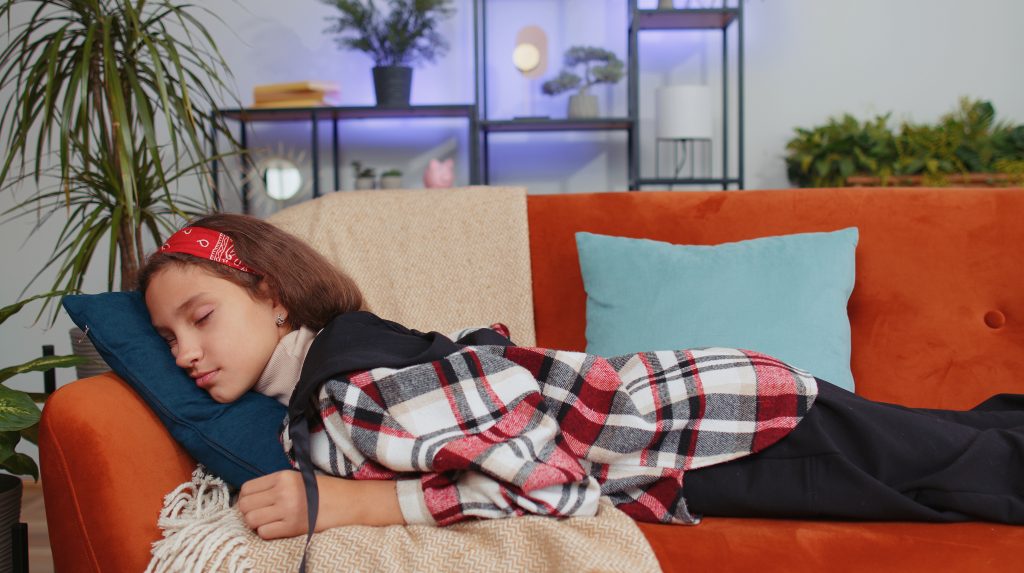
Treating migraine in children
Resting in a quiet, darkened room, using a hot or cold pack to ease the pain, and gentle massage, may be sufficient to control mild symptoms.
Most children will want to lie down during an attack, and they can be helped by a short sleep sometimes. Encourage your child to eat or drink something, if possible.
If nausea or vomiting is a problem, ask your doctor to prescribe something for this to help the painkillers be absorbed quickly and minimize these troublesome symptoms. The gut shuts down during migraine, delaying absorption of drugs and reducing their effectiveness.
Medication should be taken in adequate doses as early in an attack as possible. A migraine attack gathers momentum if left too long and delaying treatment often means it is less effective.
Drug treatment should be kept simple. If taken early in an attack, over-the-counter painkillers may be all that is necessary. Syrups or soluble tablets may be preferred as they can be more rapidly absorbed. Soluble or effervescent painkillers can be dissolved in a sweet, fizzy drink to make them more palatable and more effective.
Paracetamol is often considered the drug of choice as it can be given as syrup to even very young children. It is also available as a suppository. Ibuprofen is a more effective alternative. In the UK, aspirin is not recommended for children under the age of 16.
If these aren’t enough to control symptoms, other drugs are available on prescription from your doctor. Some studies have demonstrated the efficacy of triptans in children, but most are still not licensed for children. However, they have been used widely in children and are generally considered safe and well-tolerated. Tablets, melts and nasal spray formulations are available.
It’s worth noting that many over-the-counter combination painkillers contain caffeine, which is not advisable as it stays in children’s bodies for a long time and can reduce sleep quality.
As with adults, children with migraine should completely avoid drugs containing codeine. Migraine is easily aggravated by codeine which can transform episodic headaches into chronic daily headaches.
Overuse of acute medication can also itself be a cause of frequent headache. Drugs to treat the symptoms of migraine should not be used regularly on more than two to three days a week.
If children are experiencing frequent attacks of migraine or headache, particularly if these are not responding to simple management strategies, there may be other underlying problems such as depression, bullying at school, or other emotional problems.

Preventing migraine in children
Identifying and then managing triggers is crucial for successful prevention of migraine.
Children also respond well to biofeedback and relaxation techniques, which should be considered before drugs.
Unless the headaches are really disabling, it’s usually not necessary to give children daily drugs to prevent attacks. If your child is suffering more than five or six attacks each month, it’s worth discussing preventative medication with your GP or headache specialist.
Preventative drugs may also be considered where there is concern that attacks are interfering with schoolwork. Children should try new medications before critical periods (such as exam times) to ensure that any drug can be tolerated and that side effects won’t affect their performance. Once the migraine attacks have settled, the preventer can be reduced and then stopped
Migraine and schools
To make sure your child’s progress at school doesn’t suffer and they are properly supported, it’s worth informing the school. If possible, provide staff with specific written instructions for the management of migraines, stressing the need for early treatment.
In severe cases, an individual Health Care Plan for your child should be drawn up.
Each school will have its own rules regarding treatment. In some schools, teachers or nurses may agree to administer some medication, while elsewhere a parent or guardian may be called to collect the child.
You can help the school to properly control your child’s migraine by sharing this factsheet with them. Draw their attention to the following:
- Two to three children in each class can be affected and, since there is significant under-diagnosis, the real figure could be higher.
- Migraine in children can be quite different and is more likely to involve stomach pain and less likely to include headache.
- Attacks can be shorter, so schools should provide opportunities to recover in quiet, appropriate spaces, rather than always sending children home to miss a whole day.
- Make sure treatments offered are appropriate for migraine in children, as outlined in this factsheet – and that treatment is always provided early.
- Also, make the school aware of common triggers (see this factsheet), or the specific triggers you have identified that affect your child.
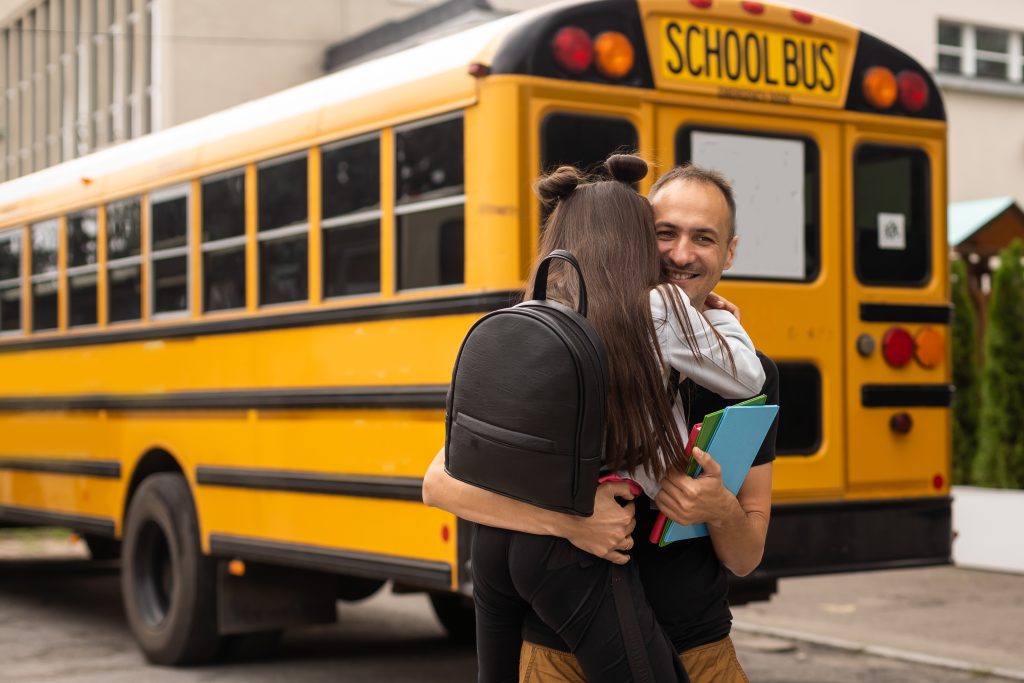
Simple pain killers in adequate doses given at the earliest stage of the attack, followed by an hour’s quiet rest (and preferably sleep) will often mean a child recovers enough to complete the school day.
